Live Without Eczema
The Handbook for Adults and Older Children
Christopher Bridgett,
Consultant Psychiatrist, London, UK
Peter Norén,
Consultant Dermatologist, Uppsala, Sweden
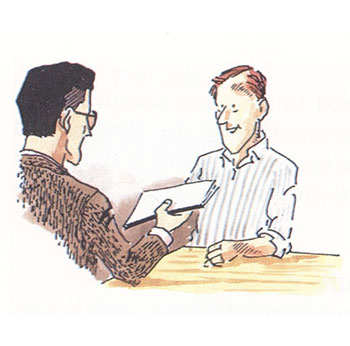
This handbook comes in three parts, to be used in three stages:

The first stage usually involves a week of homework, and the second stage four weeks of homework.
A review may be arranged in the middle of the second stage. Follow-up reviews may be arranged at six weeks and six months after starting follow-up.
There are links to related articles at the end of each part of this handbook.
The self-help book The Eczema Solution is also useful to refer to for extra tips.
💡Please bookmark this handbook to your home screen for frequent easy reference!
Part 1 - Introduction and Registration
1.1 A Combined Approach
This approach to the treatment of atopic skin disease is complementary rather than alternative to conventional treatment. Existing treatment principles are added to, creating a programme that is very effective.
An important aspect of the programme is behaviour modification to eliminate the damage caused to skin by scratching. Also emphasised is the relevance of attitude and circumstance.
Chronic eczema causes months and years of misery. Let’s replace all that with only the days of inconvenience needed for the effective treatment of acute relapses.
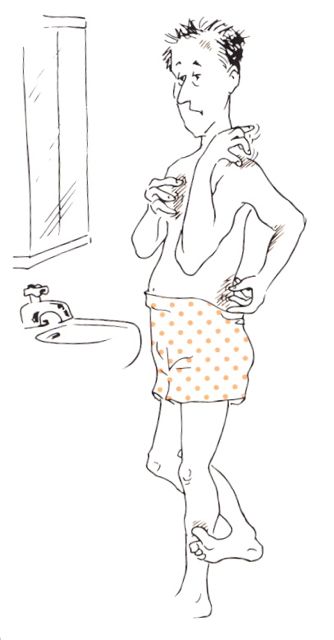
1.2 Atopy
Having ‘atopy’ means being born prone to develop eczema, hay fever and asthma. Hay fever and asthma are allergic conditions, like the rhinitis that is caused in summer by a high pollen count.
Eczema is much more to do with dry skin.
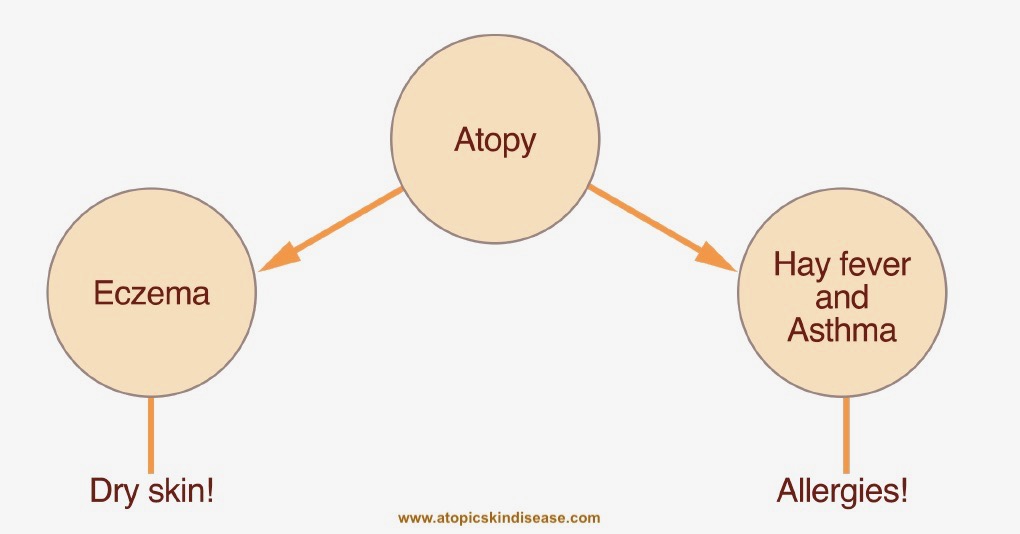
Dry skin tends to be itchy: this leads to scratching...
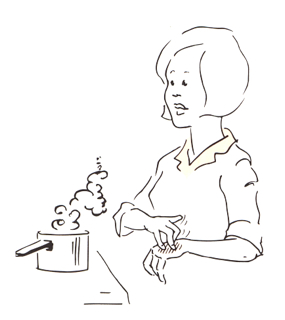
1.3 Scratching
Even normal skin when scratched will eventually look like chronic eczema under a microscope.
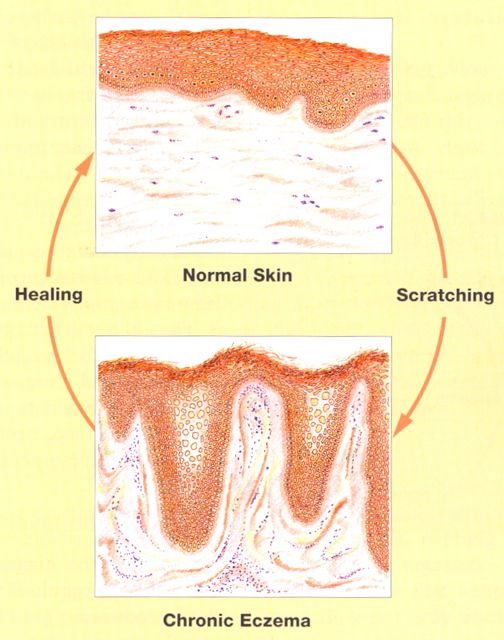

1.4 The Vicious Circle
With dryness, itching and scratching a vicious circle is established:
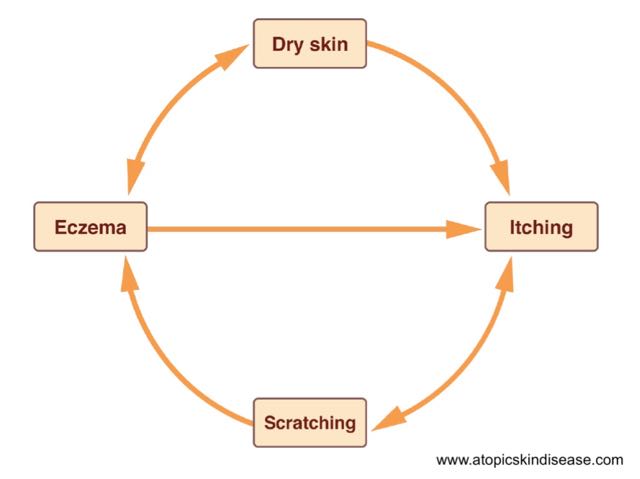
Areas that are easiest to scratch and rub are especially susceptible to chronic eczema.
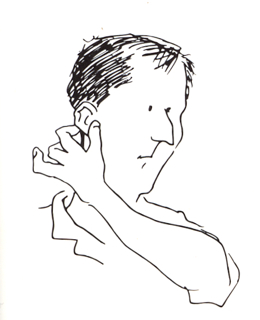
1.5 Breaking the Vicious Circle
The vicious circle of chronic eczema has three levels
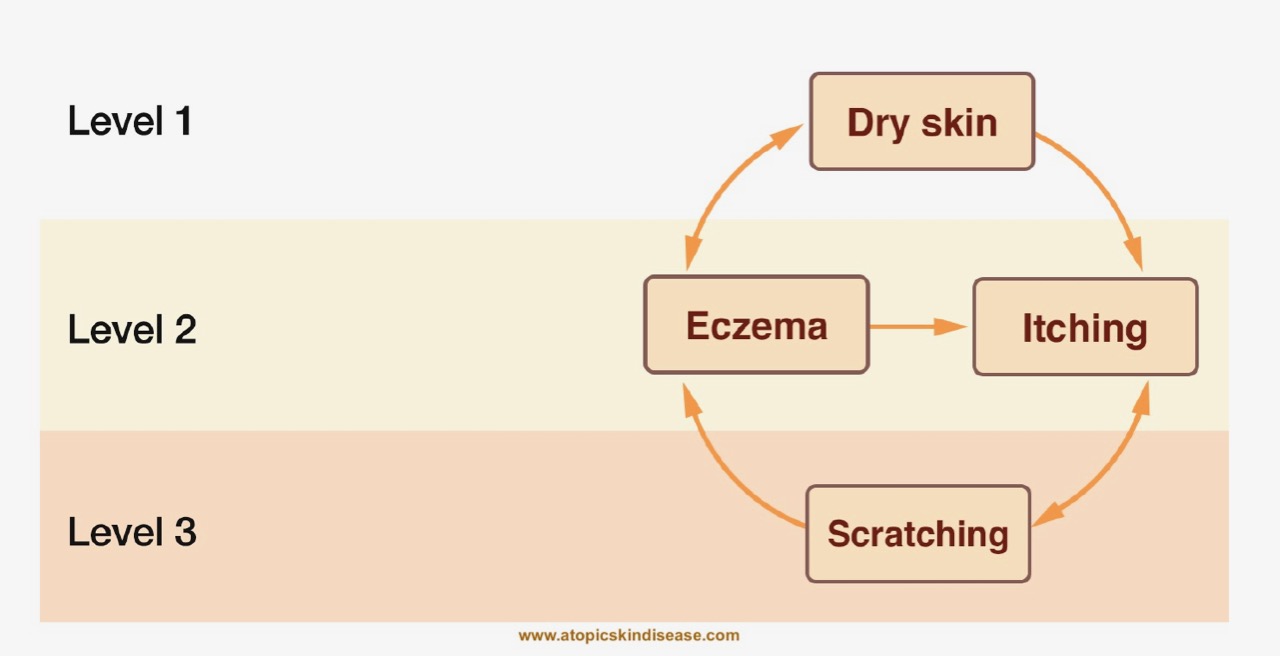
Conventional treatment provides emollients for Level 1 and topical steroids for Level 2... but neither are sufficient for Level 3! Level 3 needs its own special treatment.
Chronic eczema only heals with all three levels of treatment, as described in Part 2.
1.6 First, what about scratching?
1. Scratching here means all touching that moves the surface of the skin.
![]()
Scratching is the fastest and most effective way of getting relief from itch, but with atopic eczema the result is disastrous.
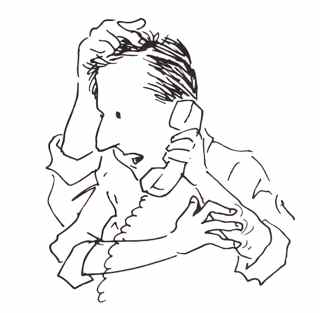
2. Scratching in the beginning is a conscious reaction to itch. Later it becomes habitual and unconscious.
3. Scratching begins as a behaviour stimulated by itch. Over time it becomes linked to other stimuli — it generalises.
So, What Do We Do?….
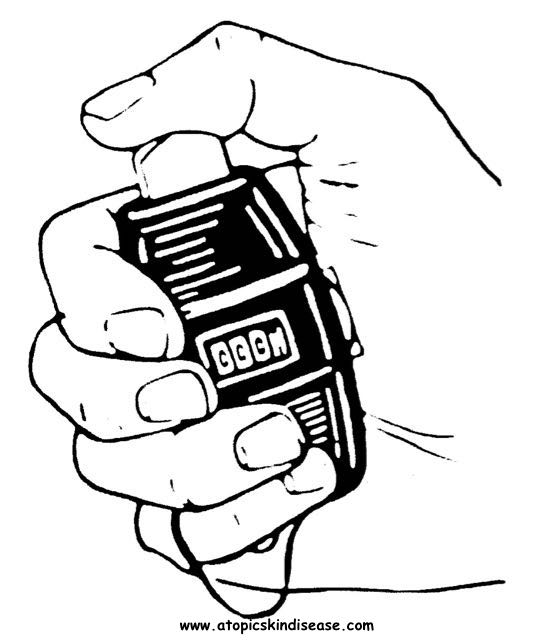
1.7 Registration
As a habit becomes part of normal life, we grow unaware of it. One way of becoming aware of a habit is to measure its frequency and bring back your awareness, with the help of a hand tally counter.
With each episode of scratching the counter is pressed. Each evening the last 24 hours total is registered on the chart provided, and the counter is re-set to zero to count the next 24 hours. Note all scratchy situations.
Registration is very important as it interferes with daily life, introduces discipline that is necessary for success and provides a result that can be easily measured. The trouble taken in registration is the price to be paid for breaking the habit.
Consistency and discipline for sufficient length of time are required for healing to occur.
Level 3 of treatment begins with registration, in order to map your behaviour.
..So, during this week...

Click here for your Registration Chart
Please Note:
- A week of registration homework, as described above, needs to be completed now before starting Part 2 of the programme.
- Bring both your chart and your counter to your next appointment.
- You will need your counter for the treatment programme!
Click here for Registration Tips
💡Bookmark to your home screen💡